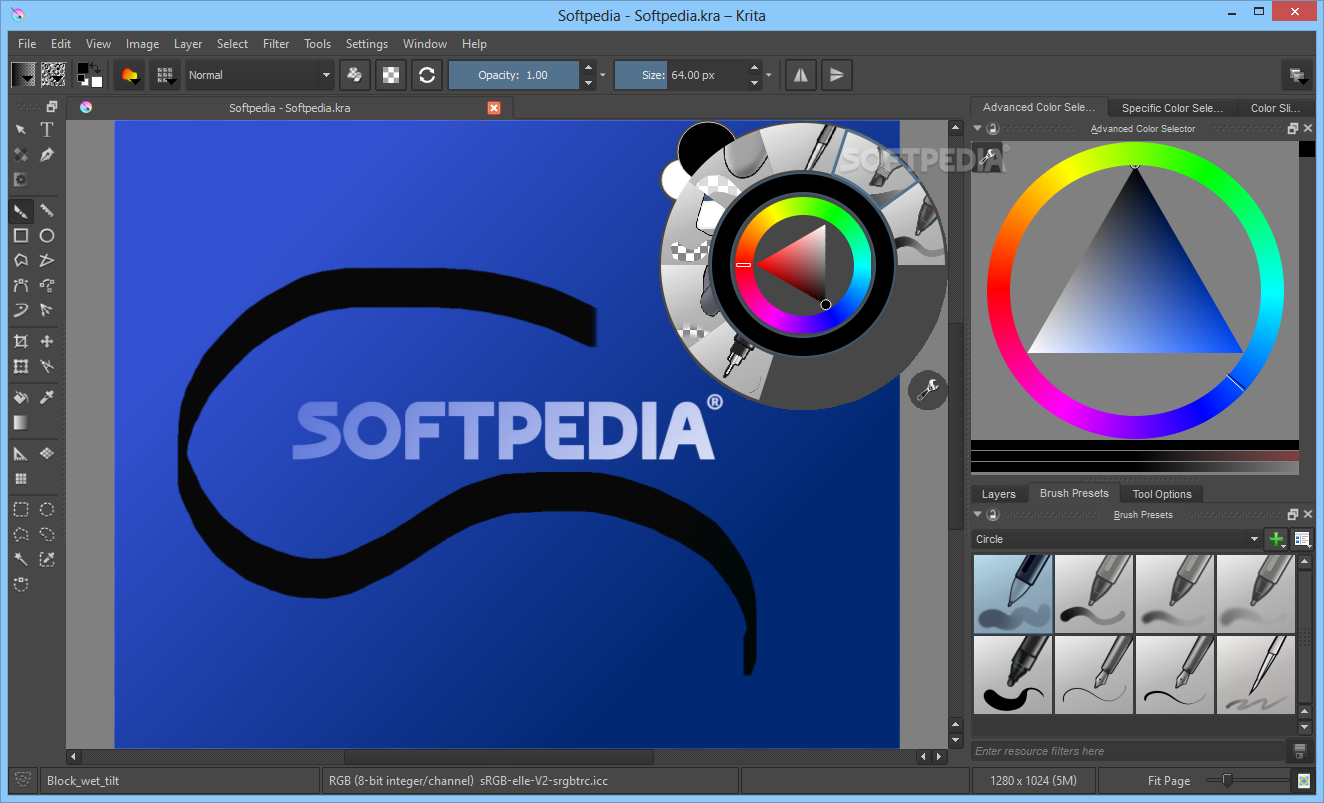

Krita's powerful set of brushes is the star of the show

Once you start the tool, you realize that everything tends to be right in your face and, while it may seem a bit intimidating at first, after an adjustment period, things seem quite natural. The main window of Krita is extensively packed with almost all the features available within the app. The app's black-themed user interface falls perfectly into the modern style adopted by most digital editor or designer apps. Modern-looking, but a bit crowded interface Put simply, Krita is a powerful digital painting and illustration utility that aims to provide you with as much creative freedom as possible, mainly thanks to its collection of tools. Renamed to KImageShop, this was the start of Krita.While some might think that everything that is digital art nowadays is made entirely in Photoshop, the truth of the matter is that the unsung heroes of most masterpieces (besides the artists) are the digital painting apps that don't even get half of the credit.ĭesigned for illustrators, concept artists, comic book creators, matte painters and even game artists, Krita is one such application that should get a little bit more attention.

His patch was never published, but did cause problems with the GIMP community at the time.Not being in a position to work together, people within the KDE project decided to start their own image editor application development focused on an application that was part of the KOffice suite, called KImage, by Michael Koch. Matthias wanted to show the ease with which it was possible to hack a Qt GUI around an existing application, and the application he chose to demo it with was GIMP. The origin of Krita can be traced to Matthias Ettrich’s at the 1998 Linux Kongress.

The name “Krita” comes from Swedish, and means “to draw” or “chalk” and was taken after the names “KImageShop” and “Krayon” gave problems.


 0 kommentar(er)
0 kommentar(er)
